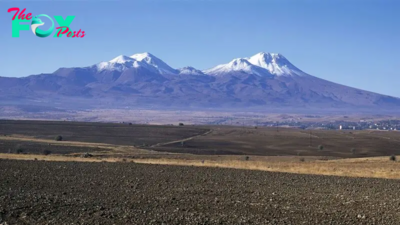Science
Hurricane Milton is tied for the fastest-forming Category 5 hurricane on record. It could become the new normal.
Hurricane Milton smashed into Florida's west coast on Wednesday night (Oct. 9), spawning multiple tornadoes and 28-foot-high (8.5 meters) waves as it plowed a deadly path across the state.
Streets turned into rivers as the hurricane made landfall near Siesta Key in Sarasota County, according to the National Hurricane Center (NHC). It arrived as a Category 3 storm, bringing 120 mph (190 km/h) winds and storm surges of up to 13 feet (4 m), before weakening to a Category 1 as it crossed central Florida.
Milton, which battered Florida just a few weeks after Hurricane Helene, seemed to come out of nowhere, intensifying rapidly from a tropical depression to a Category 5 over the space of 2 days.
"Major storms developing sequentially isn't all that unusual. What is almost unprecedented is two major hurricanes targeting the same state within two weeks," Ryan Truchelut, chief meteorologist and co-founder of the weather-tracking website WeatherTiger, told Live Science. "This is the fastest turnaround time for two major hurricane landfalls in Florida History."
In recent decades, enhanced satellite imagery and more detailed models have vastly improved how far out meteorologists can forecast devastating storms — buying precious time for evacuations. But climate change could make early warnings tougher as back-to-back, rapidly intensifying, storms become more common.
Related: How strong can hurricanes get?
Hurricanes are fueled by a thin layer of evaporating warm ocean water that rises to form storm clouds. The warmer the ocean is, the more energy the system gets, accelerating the formation process so that violent storms can rapidly take shape. This is why hurricane season occurs from June to November and why the most powerful storms in the Atlantic usually occur between August and September, when ocean temperatures peak.
-

 Science3d ago
Science3d agoInside Capitol Hill’s Latest UFO Hearings
-

 Science3d ago
Science3d agoYou Won’t Want to Miss the Leonid Meteor Shower. Here’s How and When You Can See It
-

 Science4d ago
Science4d agoHere’s What Trump’s Win Means for NASA
-

 Science1w ago
Science1w agoWhy Risky Wildfire Zones Have Been Increasing Around the World
-

 Science1w ago
Science1w agoIt’s Time to Redefine What a Megafire Is in the Climate Change Era
-

 Science1w ago
Science1w ago4 Astronauts Return to Earth After Being Delayed by Boeing’s Capsule Trouble and Hurricane Milton
-

 Science1w ago
Science1w agoThe Elegance and Awkwardness of NASA’s New Moon Suit, Designed by Axiom and Prada
-

 Science2w ago
Science2w agoSpaceX Launches Its Mega Starship Rocket. This Time, Mechanical Arms Catch It at Landing



























